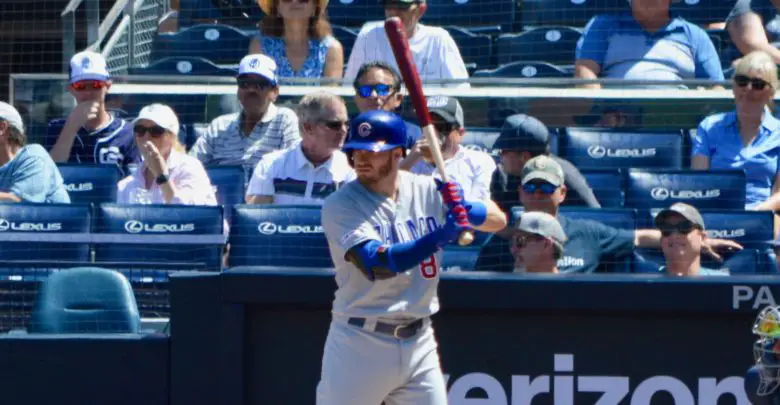
Ian Happ’s Strong Finish Has Him Primed for Big 2020 Campaign
Ian Happ‘s 2019 did not get off to the start he’d envisioned. Despite spending most of the two previous seasons in Chicago, an abysmal spring performance and the need to rework his swing led to the Cubs demoting him to Triple-A Iowa just three days before the regular season began. He would spend four months cooling off in the Pacific Coast League before a second-half return to Chicago.
The ninth overall pick in the 2015 draft debuted in 2017 with a huge splash, launching 24 homers and posting an .842 OPS with a 114 wRC+ in just 413 plate appearances. After coming up for fill-in duty as something of a reward for his early performance at Iowa that season, Happ forced his way into a regular role with the Cubs. That carried right over into the first half of 2018, in which he hit 11 homers and posted an .832 OPS in 280 plate appearances Then the bottom fell out.
Happ hit just .196 in the second half and saw his wRC+ fall from 123 to 80 as his slugging went from .453 to .340 and his OPS nearly 180 points. The switch-hitter was particularly awful from the right side, posting a 22 wRC+ and .411 OPS, but his overall strikeout rate of nearly 37% was just as bad from both batters boxes. That’s…not good.
Happ was tasked with adjusting his hitting mechanics during his stint in Des Moines in an attempt to improve his contact rate, particularly on pitching inside the zone. According to FanGraphs, he got his bat on just 70.2% of pitches in the strike zone, a whopping 15 points below league average (85.5%), so he got back to basics with minor league hitting coordinator Chris Valaika. They worked on both swing path and approach, particularly when it came to developing a less aggressive “B-hack” aimed at contact over damage.
The results weren’t immediate and Happ went through a stretch during which he hardly hit the ball in the air. That was by design, though, since he was trying to “flatten” his swing and reduce that whiff factor. His reworked swing was put to the ultimate test when he finally got the call to return to the majors in late July, and the early results weren’t great. But after a slow start, Happ caught fire down the stretch and went on to hit 11 homers with an .898 OPS and 127 wRC+ in 156 plate appearances.
Perhaps the most promising signs could be found in his peripherals, like a 25% strikeout rate that was more in line with his earlier minor league numbers. That ugly in-zone contact rate shot up to 82.1% in 2019 and his right-handed wRC+ went from a 69 in 2018 to a more respectable 96, a very nice improvement. Happ even had two defensive runs saved in the outfield after an ugly -8 DRS over the course of the previous campaign.
The big caveat here is the small sample size in which he produced those numbers. Happ is a notoriously streaky hitter and his good work could evaporate as quickly at it appeared. For instance, his overall numbers were heavily influenced by a torrid finish in which he put up a 1.719 OPS and 328 wRC+ over his last 27 plate appearances. While that pace isn’t sustainable, there is reason to believe he can be an impact player moving forward.
His improved contact and strikeout rates down the stretch weren’t just better than in 2018, they were also significantly better than in his rookie campaign. And Happ’s .286 batting average on balls in play was the lowest of his career, indicating that he may actually have been a bit unlucky this past season. The improved results were the result of anything but luck, however, as Happ was very intentional about working through his weaknesses in the minors.
He was still an above-average run-producer during that down year in 2018, so there’s no reason to doubt his ability to be at least that again in 2020. If the changes he made last season really do lead to sustainable improvements in his approach, Happ could easily be a 3-4 WAR player who can fill in at six spots across the diamond. That’s a guy you absolutely hold onto.

